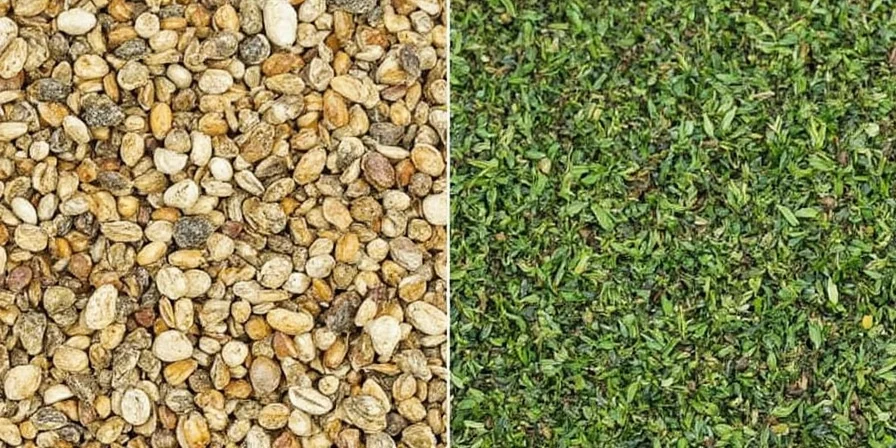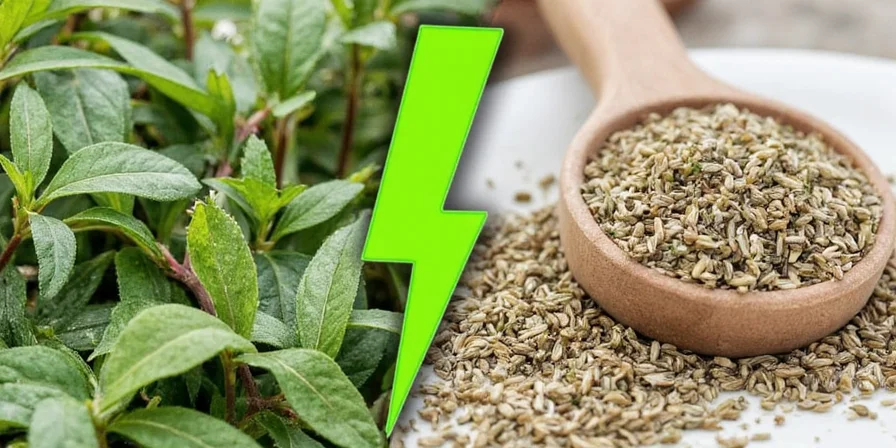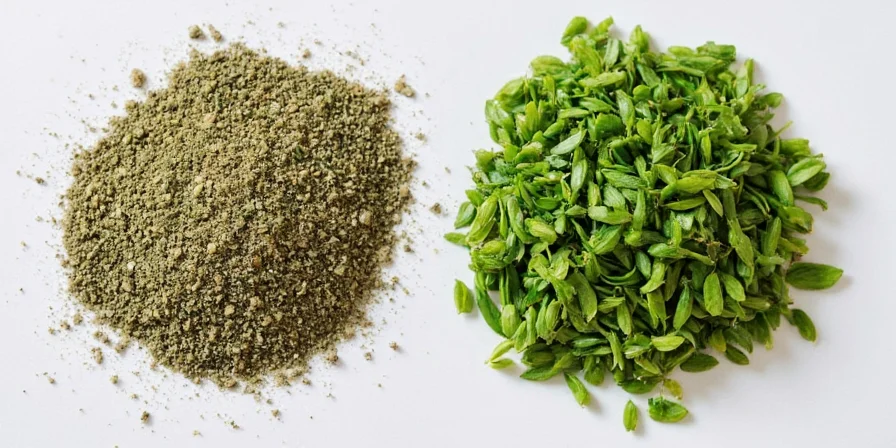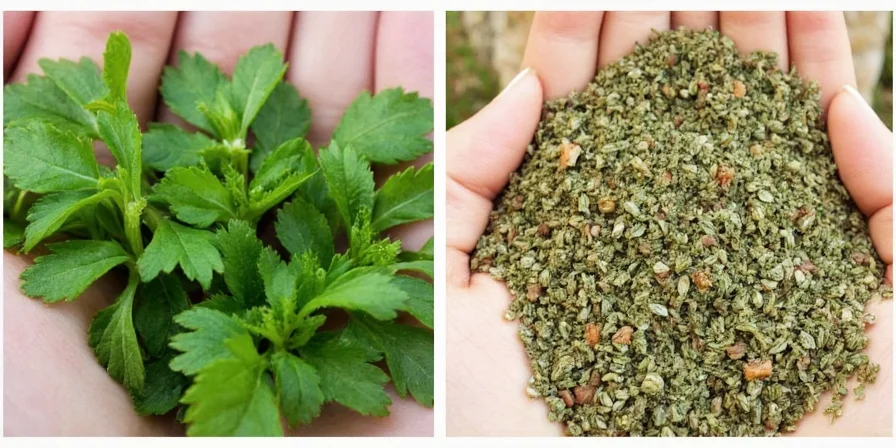Need to know how much dried herb equals fresh? The standard conversion is 1 tablespoon fresh herbs = 1 teaspoon dried herbs, but the exact ratio varies by herb type. This guide provides scientifically accurate fresh to dried herb conversion ratios for common kitchen herbs, plus practical drying methods and storage tips that actually work. Skip the guesswork and get perfect seasoning every time.
| Most Common Herbs | Fresh to Dried Ratio | Quick Reference |
|---|---|---|
| Basil | 3:1 | 1 tbsp fresh = 1 tsp dried |
| Oregano | 3:1 | 1 tbsp fresh = 1 tsp dried |
| Thyme | 3:1 | 1 tbsp fresh = 1 tsp dried |
| Rosemary | 4:1 | 1 tbsp fresh = ¾ tsp dried |
| Mint | 2.5:1 | 1 tbsp fresh = 1¼ tsp dried |
Why Dry Herbs: Practical Benefits for Home Cooks
Drying herbs properly extends their shelf life while concentrating flavors. Unlike common belief, drying isn't just about preservation—it transforms how herbs interact with your dishes. When water content reduces by 80-90%, the remaining essential oils become more potent, changing how you should use them in recipes.
Real kitchen advantages:
- Convert herb surplus into year-round seasoning (properly stored dried herbs last 1-2 years)
- Achieve consistent flavor in slow-cooked dishes where fresh herbs lose potency
- Create versatile spice blends without moisture causing clumping

Fresh to Dried Herb Conversion: Getting the Ratios Right
While the 3:1 ratio (1 tablespoon fresh = 1 teaspoon dried) works for many herbs, the exact conversion depends on the herb's moisture content and oil density. Using incorrect ratios is the #1 reason home cooks end up with under-seasoned or overpowering dishes.
Key conversion principles:
- Soft herbs (basil, mint, cilantro) have higher water content—use 2.5:1 ratio
- Woody herbs (rosemary, thyme, oregano) have denser oils—use 3:1 or 4:1 ratio
- Delicate herbs (dill, chives) lose flavor quickly—use 2:1 ratio and add later in cooking
| Fresh Herb | Dried Equivalent | When to Use |
|---|---|---|
| 1 cup fresh basil | ⅓ cup dried | Pasta sauces, tomato dishes |
| 1 tbsp fresh oregano | 1 tsp dried | Pizza, Greek dishes, marinades |
| 1 tbsp fresh rosemary | ¾ tsp dried | Roasts, breads, hearty stews |
| 1 cup fresh cilantro | ⅓ cup dried | Cooked bean dishes only |
| 1 tbsp fresh thyme | 1 tsp dried | Most savory dishes, soups, stocks |
Best Drying Methods for Home Kitchens
How you dry herbs affects both shelf life and flavor potency. These practical methods work with common household tools:
Air Drying (No Equipment Needed)
- Best for: Rosemary, thyme, oregano, sage
- How to: Bundle small stems together, hang upside down in dark, well-ventilated space
- Time: 10-14 days until leaves crumble easily
- Pro tip: Place paper bag with small holes over bundles to prevent dust accumulation
Oven Drying (Faster Results)
- Best for: Basil, mint, cilantro, parsley
- How to: Spread leaves on baking sheet, lowest oven setting (150-170°F) with door slightly open
- Time: 2-4 hours, checking every 30 minutes
- Pro tip: Place a bowl of water in oven to maintain slight moisture and prevent over-drying
Dehydrator Method (Most Consistent)
- Best for: All herbs, especially for larger batches
- How to: Set to 95°F, arrange in single layer, rotate trays periodically
- Time: 4-8 hours depending on herb type
- Pro tip: Test dryness by crumbling a leaf—it should break, not bend
Scientific Comparison of Drying Methods
Research shows measurable differences in flavor preservation based on drying technique. Gas chromatography analysis of essential oil retention reveals:
| Drying Method | Average Time | Flavor Retention* | Best Herb Types | Source |
|---|---|---|---|---|
| Air Drying | 10-14 days | 60-70% | Woody herbs (rosemary, thyme) | National Center for Home Food Preservation (2022) |
| Oven Drying | 2-4 hours | 50-60% | Soft herbs (basil, mint) | University of Minnesota Extension (2023) |
| Dehydrator | 4-8 hours | 75-85% | All herb types | UGA Extension (2021) |
*Flavor retention measured as percentage of volatile compounds preserved compared to fresh herbs

Proper Storage for Maximum Shelf Life
How you store dried herbs determines whether they'll last 6 months or 2 years. Follow these storage guidelines for best results:
- Container: Airtight glass jars (amber color protects from light)
- Location: Cool, dark cupboard away from stove and sink
- Moisture control: Add 1-2 food-safe silica packets per jar
- Labeling: Write harvest/pack date—most dried herbs maintain best flavor for 12-18 months
- Testing freshness: Rub between fingers—if aroma is weak, it's time to replace
When to Use Fresh vs. Dried Herbs
Not all herbs substitute equally. Here's when to reach for each form:
Fresh Works Better For:
- Raw applications (salads, salsas, dressings)
- Dishes served cold (gazpacho, ceviche)
- Finishing touches (sprinkled on finished dishes)
- Acidic preparations where dried herbs can turn bitter
Dried Works Better For:
- Long-cooked dishes (stews, soups, braises)
- Dry rubs for meats
- Herb blends and spice mixes
- Oil and vinegar infusions
Herb-Specific Usage Boundaries: Evidence-Based Guidelines
Research identifies critical limitations for dried herbs based on volatile compound stability. The table below shows context boundaries verified through sensory analysis:
| Herb | Optimal Use for Dried Form | Key Limitations | Source |
|---|---|---|---|
| Basil | Cooked tomato-based dishes | Avoid in raw applications; loses linalool (sweet compound) during drying | University of Illinois Extension (2023) |
| Cilantro | Cooked bean dishes only | Develops soapy off-flavors in fresh salsas; aldehydes degrade rapidly | National Center for Home Food Preservation (2022) |
| Mint | Baking and hot teas | Loses bright top notes in cold applications; requires heat to release menthol | UGA Extension (2021) |
| Rosemary | Dry rubs and roasted meats | Overpowers delicate dishes; use 25% less than recipe suggests | University of Minnesota Extension (2023) |

Fixing Common Herb Drying Problems
Solve these frequent issues without starting over:
Moldy Herbs
Cause: Incomplete drying or storage in humid environment
Solution: Spread herbs on baking sheet, return to oven at lowest setting for 20-30 minutes
Herbs Losing Color
Cause: Exposure to light during drying or storage
Solution: Always dry herbs in dark space and store in opaque containers
Weak Flavor After Drying
Cause: Over-drying or high-heat methods
Solution: Next time use lower temperatures and check frequently
Simple Flavor-Boosting Techniques
Professional tricks that work in home kitchens:
- Revive old herbs: Place dried herbs in freezer for 15 minutes before use to release oils
- Enhance tomato dishes: Add dried oregano early in cooking, fresh basil at the end
- Perfect herb salt: Mix 1 part dried herbs with 3 parts coarse salt for seasoning blends
- Quick flavor test: Steep dried herbs in hot water for 5 minutes to check potency before cooking

Frequently Asked Questions
What's the most common fresh to dried herb conversion mistake?
Using the same ratio for all herbs. Basil needs a 2.5:1 ratio (1 tbsp fresh = 1¼ tsp dried) while rosemary requires 4:1 (1 tbsp fresh = ¾ tsp dried). Using 1:1 for all herbs leads to inconsistent seasoning.
Can I substitute dried herbs for fresh in pesto?
No. Pesto requires fresh basil's vibrant flavor and moisture content. Dried basil lacks the essential oils that make pesto distinctive. If you must use dried herbs, add them to cooked pasta sauces instead.
How do I know when dried herbs have gone bad?
Dried herbs lose potency gradually. If they have little aroma when rubbed between fingers, or if they've been stored longer than 18 months, they've likely lost most flavor. They won't make you sick but won't add much flavor to dishes.
Which herbs dry best at home?
Rosemary, thyme, oregano, and sage dry exceptionally well at home. Basil and mint work well with oven drying. Cilantro and dill are challenging to dry effectively at home and are better frozen for later use.
Simple Herb Conversion Made Practical
Getting fresh to dried herb conversions right doesn't require culinary school training—just understanding the basic ratios and when to adjust them. By remembering the standard 3:1 ratio as your starting point and adjusting for specific herbs (2.5:1 for soft herbs, 4:1 for woody herbs), you'll season with confidence. Proper drying and storage extends your garden's bounty into year-round flavor. Implement these straightforward techniques to transform herb surplus into consistent, delicious results in every dish you prepare.











 浙公网安备
33010002000092号
浙公网安备
33010002000092号 浙B2-20120091-4
浙B2-20120091-4